
Eugene Birchall
Pictures of Thomas Hardy’s Wessex


Twenty two years ago, when I wanted a really good watercolour
teacher, I asked around…people whose painting I admired…and
without exception, they all said…well, there’s only one man…he
lives in Yeovil and he‘s called Ron Jesty, but you’d be very lucky to
get into one of his classes …there’s a long, long waiting list….but
somehow, thanks to a mutual friend whom some of you will
remember, Chris Clark from Castle Cary, he took me on, so I gained
not only a demanding teacher but in time a good friend, too.
Of course, many of you here have known him far longer than I
have,,,,former students, colleagues in his design business, family,
and friends of very long standing. And you will surely be able to add
all kinds of memories when we gather after the service but I am
sure he would want to thank us all for being here. Maybe he would
be surprised and rather pleased to see so many.
Ron took such a delight in all kinds of things, great and small, and
enjoyed sharing them, right to the end. Just three days before he
died, as chance would have it, we were in his flat and he went to
make us coffee, and, like everything he did, his coffee making was
done with absolute precision….exactly the right strength for each of
us and the right amount of milk…so the coffee was a long time
coming…but when he finally emerged from the kitchen, there was a
twinkle in his eye as he brought not only coffee but two beautiful
little miniature pots, very elegantly wrapped, of yoghourt and
raspberry …which he had gleefully discovered in one of his favourite
haunts, the food floor at Marks and Spencers, (a place he said he
could not possibly do without, though latterly he had to sit down on
a bench a couple of times on the way to catch his breath). And as
we savoured the delicacies, we planned a trip to Portland Bill,
another favourite haunt, where he loved to sketch rocks and sea
and sky, as is so wonderfully shown on our service sheets.
Of course he was the kindest of men and a wonderful friend, his
selflessness supremely shown in his truly remarkable care of
Margaret in her final illness. But his slight, and latterly bent, figure,
and his mild and gentle, self effacing, style, belied great strength,
and sometimes a surprising directness. He was an uncompromising
perfectionist and a disciplinarian as pupils and colleagues soon
discovered.
When once, in his class at Yeovil Arts Centre, we were attempting an
exercise in landscape composition, with strips of dark cloud in the
upper part, he came to look at my effort (this was always a distinctly
anxious moment). He pointed to a spot towards the top and said: “It
needs to be divided here.” “With another strip of cloud?” I asked.
”No, with a pair of scissors.”
Ron was born in Weymouth, one of three brothers. I remember him,
on a trip to Dorchester, telling me about his childhood visits to
grandparents there who remembered Thomas Hardy cycling past
their house and where Ron used to watch cattle and sheep driven to
market along the main streets.
After school, he went to train as a mechanical draughtsman, with a
marine engineering firm (an experience which developed his passion
for precision and detail), and when the torpedo factory where he
worked was destroyed by German Stuka dive bombers, he was
saved, as was everyone who worked there, by merciful prior warning
of the attack.
In 1945, he developed TB and was sent to a sanatorium in Ventnor
on the Isle of Wight. He repeated, only a week or two ago, what he
had often said, that it was the best thing that had happened to him.
And this was not altogether a joke, and there were three reasons.
The first, and by far the most important, was that one time, on the
way back across the water, he suffered a tremendous storm and,
when he arrived, collapsed with total exhaustion, awakening much
later to the memorable smile of a nurse bringing him breakfast. The
nurse, of course, was Margaret. And we may all know already the
remarkable story of how, as their affection evidently grew, one of
the hospital sisters took Ron aside to warn him that Margaret (who
was now herself a patient, having contracted lung disease) might
have no more that two years to live, whilst quite independently
another took Margaret aside to say the same about Ron. They were
both warned not to get too serious. But they did get serious, and
their marriage, in 1953 lasted for 57 years, whilst Ron very recently
enjoyed his 90th birthday.
Ron was in hospital for more than six years, and always afterwards
recalled two other benefits that time had given him….one was his
love of music; he had one day asked the man in the next bed what
he was listening to on his headphones. ‘Grieg’ the man replied. The
word Grieg at that time meant nothing to Ron, but his neighbour
explained, and so began an introduction to classical music. We have
Grieg’s music here today, and just a week or two ago, Ron went
over to the Octagon theatre with a friend, one of his last treats, and
enjoyed a marvellous performance by the Philharmonia Orchestra.
There was also a visiting art therapy teacher to the hospital who helped
Ron develop his interest in watercolour painting to such good effect that,
when he left hospital, he started to take commissions from local
printers for illustrations. A course in Illustration at Weymouth
College further enhanced his natural abilities.
A recurring thread in his life…fun, sometimes expressed in the form
of mischievous practical jokes, was evident in hospital too, with
stories of rotting fish strategically positioned under a bed for maximum effect.
Ron and Margaret‘s married life started in a flat in Beaminster, where they
happilywatched the local cricket club. But in time he was able to start his
own design studio, Jesty Graphics, in Yeovil. The business rapidly attracted
much good work in advertising, preparation of brochures and illustration, for Westlands and many others. And Ron assembled a wonderful team, some
of whom became his and Margaret’s closest friends of longest standing and
are here today. Ron kept on repeating his gratitude to those friends, old
and new … he had a realgift for making new friends who helped him in
these last years through Margaret’s illness and death and beyond until now.
And two other familiar threads run through the time of Jesty Graphics.
One is his love of pranks…this time involving the comic potential of a lockable photographic dark room…and the other is that uncompromising perfectionism.
I have been told of how even a highly expert and experienced designer
would take his work to Ron for approval with considerable trepidation,
lest it might be judged not to be quite up to the mark.
In time, Ron‘s sight began to fail and he sold the business, but he
could see plenty well enough to concentrate now on his painting,
developing his own style to a high degree and becoming a powerful
influence through his teaching. When he could be persuaded to give
a demonstration to his class at Yeovil Arts Centre, there were
meticulous preliminaries…arranging brushes, water pots, paper and
paints just so. Then, at last, he would make the first mark on
the paper as we all marvelled. And it is his demonstration of the
exact gradations in tonal contrast, sharp edges and perfectly
formed tiny shapes, often of figures on distant rocks, the precision of
draughtsmanship, and distillation of a complex subject into a clear,
apparently simple composition, that make him such an individual
watercolourist.
Happily, his work is to be seen in many places and his influence as a
teacher is readily apparent in the work of so many, amateur and
professional across this part of England and elsewhere, who have
been fortunate enough to learn from him. He said that he learned
to systematise his ideas about painting from the artist Jeff Pickering
who had retired to Sherborne, and, as Ron said “helped me put my
ideas in order.”
Ron exhibited at the Royal West of England Academy, the Royal
Institute of Painters in Watercolour, the Royal Society of British
Artists, and in galleries across the region. His work and ideas were
also made available in his book on how to paint seascapes in
watercolor. Copies are now rare and precious, fetching a high price.
I treasure mine.
Ron was always open to new delights, whether in art or friendship or music
or Hardy’s work or indeed, as we have seen, in Marks and Spencers
foodstore (where he was a regular, much loved by all the staff). And he
delighted too in the natural world around him, a delight which the magical
work in his paintings and sketchbooks beautifully records. In recent times,
he loved to be driven up onto Ham Hill and would spend hours there just
watching the shifting cloud formations.
As the sight in his one good eye grew weaker, Ron understandably feared
surgery in case he became blind and unable to look after Margaret, but in
time, and after her death, he did indeed have laser surgery to remove a
cataract. And he said it was like being reborn. His own paintings on the
wall which had looked uniformly dull and grey suddenly sprang to life. …
another new delight.
Of course there is so much more that could be said. I heard only the
other day of his saying about their wonderful marriage: “There’s
nothing Margaret wouldn’t do for me, and nothing that I wouldn’t do for
Margaret, and that’s how we go through life … doing nothing for each other.”
No doubt we shall share more stories after this service, but, for the
moment, we can maybe just reflect that we are lucky to have known
such a man and to be here to celebrate such a life.
Ronald Jesty - Eulogy by John Vallins
Delivered at the funeral service on 21 July 2016
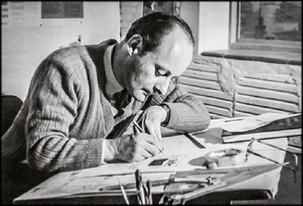
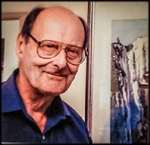
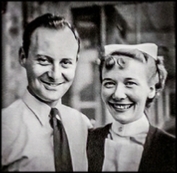
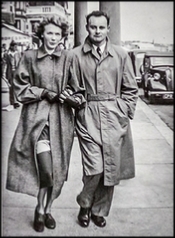
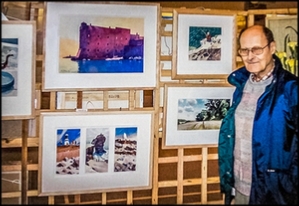
Pictures on this page
courtesy of Les Seabrook
Back
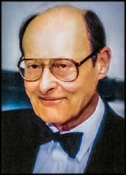
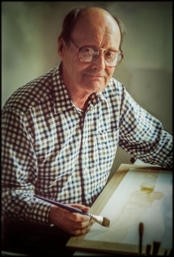
| Introduction |
| Hardy's Family History |
| Modern Map |
| Old Wessex Map |
| Off Wessex |
| Dorchester Map |
| UK Weather |
| Hardy's Novels |
| Hardy Place Names |
| Bibliography |
| Copyright Info |
| Stourhead |
| Shearwater |
| Salisbury |
| Killerton |
| Exmouth |
| Seaton |
| Branscombe |
| Sidmouth |
| Beer |
| Dawlish |
| Teignmouth |
| Blackberry Camp |
| Moretonhampstead |
| Axminster |
| Plymouth |
| Budleigh Salterton |
| Torquay |
| Widecombe in the Moor |
| Lynmouth |
| Castle Drogo |
| New Forest |
| Lyndhurst |
| Bournemouth |
| Christchurch |
| Oxford |
| Fawley |
| Denchworth |
| Hungerford |
| Wantage |
| Letcombe Bassett |
| Letcombe Regis |
| Rame Peninsula |
| Looe |
| Brixham |
| Eden Project |
| Polperro |
| Polruan |
| Mevagissey |
| Portwrinkle |
| Falmouth |
| Mousehole |
| St Mawes |
| St Ives |
| Charlestown |
| Lizard Point |
| Porthleven |
| Truro |
| Lostwithiel |
| Eugene's Links |
| Hardy's Links |
| Ronald Jesty |
| Other links |
| Jesty Photos |
| Pictures by Ron Jesty |
| Gardener Ron |
| Eulogy to Ron Jesty |